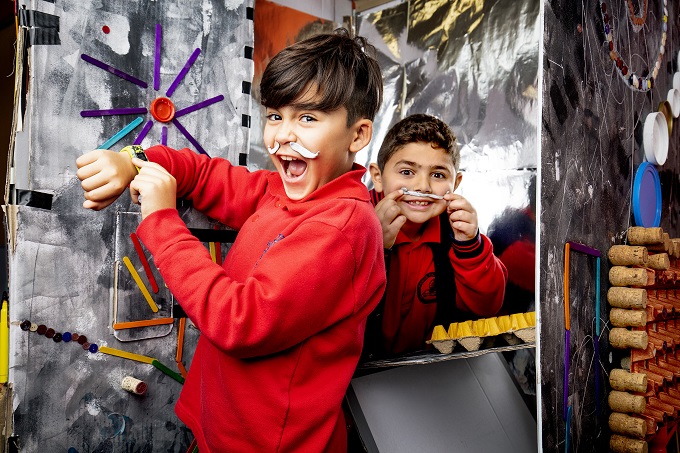Class Dojo: What if you were last?

Adam Voigt offers another perspective on the effectiveness of Class Dojo style behaviour management approaches. Many are convinced points systems get results, but are they improving learning?
What if you were last?
By Adam Voigt
Picture this if you will… It’s time for your school’s staff meeting. Folk wander in at 3.45pm-ish, after another day of facilitating the growth of batches of 25 or so resistive young people. Jarryd (damn those J names with their multiple potential spellings) has just had another one of those days and you’re feeling particularly weary, perhaps even a little frustrated, angry or ineffective. You reach for a coffee, but the four-litre can of International Roast has run out, and nobody has bothered to either bin it or order a new one. You’re going to need to get through this meeting on peppermint tea or another $2.50 IOU to the staff fridge for a Coke Zero. Sigh.
The meeting begins with the principal pulling up their own version of Class Dojo onto the SmartBoard. You see everybody rated how on how “good” they’ve been in the classroom and, of course, Mary-Ann is leading with 315 points. Mary-Ann is always in front.
You’ve even heard she goes around to the boss’s place for drinks on most Friday nights. It figures – bloody goody two shoes, Mary-Ann. How come there are never any J names on her class lists.
You quickly scan for your own score next and see a rather disappointing 11 beneath the cute, grinning fluffy monster that you chose as your avatar. He really seems incongruent with the number corresponding to him now. Really? 11?
Is that where I’m at now? Geez, well at least I’m not the only one, I’m a better teacher than Barry at least. Where’s Barry’s avatar? Oh, you’ve got to be kidding me! Barry is on 37?! How could that possibly be right? Barry’s basically a cabbage with a teaching qualification from the stone age. This is unbelievable!
You check for a few other scores now, mainly for those you consider peers and equals. Joanne is on 51, Lee is on 48 and somehow Craig the PE teacher has made it to 72 (probably because he spends all day playing kickball with the kids). PE teachers!
[pro_ad_display_adzone id=”5852″ align=”left” padding=”3″]Back to the real world now. The questions I ask you with this picture in your head are:
- Is this likely to produce positive reflection on your performance? How did this make you feel?
- Is this conducive to group morale?
- Is this serving to help those who need the most help?
- How does this approach sit against intentions for equity and differentiation?
- And the most important question is clearly … Why on earth would you do this to your students?
Now, before I send too many folk up in arms about how positive their experience is with points systems like Class Dojo and others, and that it’s all about how you use the system – just bear with me a little longer. I totally get it. When it comes to improving behaviour, we’ve been subjected to so many buzz programs and catchwords (don’t get me started on “Stop it. I don’t like it.” That’s why he’s doing it to you in the first place!) that we are prepared to give a go to something designed to appeal to get the interest of a very specific cohort – naughty boys. Ja rryd.
rryd.
The issue I have is that it’s appealing to the problem and not the solution for Jarryd. Jarryd is already highly motivated by competition. And as with many mild-mannered people of sound potential, the moment you place them in a competitive environment they can display some truly deplorable behaviours… but they love it! There’s a place for competitive behaviours and that’s in competition. As such, we shouldn’t strain to integrate collaborative behaviours into these environments. This is the folly of handing out identical ribbons to everyone in the race.
The race is designed to rank and this is where we learn to win and lose well – strong contributors to resilience, but classrooms are not competitive environs. They are collaborative ones.
And the moment we bring in competitive systems, is the moment we can predict competitive behaviours becoming the norm in the long run. Sure, some boys will be motivated by the league table. The same way some journalists and politicians are motivated by NAPLAN league tables. But the absence of context and the strong compulsion to do things above and not with others does not helps schools or classrooms improve.
We all gain by matching collaborative behaviours to collaborative environs. Above a points system, we should be looking to import the best elements in cooperative learning into our classrooms. Even if it’s hard. Jarryd needs it more than anyone.
Don’t have time to absorb the whole article today?
Here’s the big points …
- Project our practices over ourselves first.
- Think about your systems – are the collaborative.
- Competitive systems do have a place, it’s just not a classroom.
- Match systems to your intentions for equity.
- Avoid appealing to the problem.
AITSL STANDARDS FOR TEACHERS
… and you addressed them by reading!
The Big One
- 1.5 Differentiate teaching to meet the specific learning needs of students across the full range of abilities.
- But also … 3.3 Use teaching strategies.
- 3.6 Evaluate & improve teaching programs.
- 4.3 Manage challenging behaviour.







